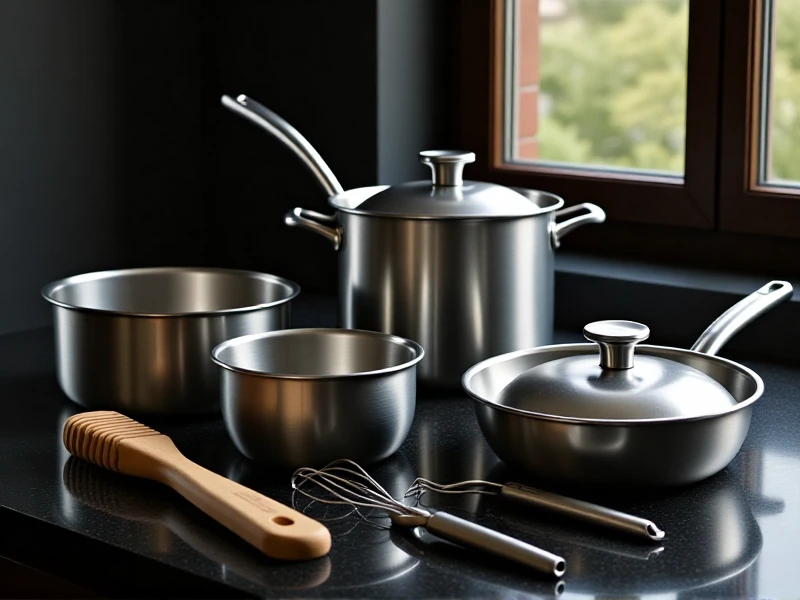
Your Guide to Selecting the Perfect Cookware
Choosing the right cookware isn't just about filling your cabinets; it's about transforming your kitchen experience. Quality cookware heats evenly, lasts for years, and makes cooking more enjoyable. With so many options—stainless steel, non-stick, cast iron, ceramic—knowing what fits your cooking style is key.
Material Matters:
- Stainless Steel: The versatile workhorse. Ideal for searing, browning, and deglazing. Look for tri-ply construction (stainless/aluminum/stainless) for superior heat distribution. It's durable, oven-safe, generally dishwasher-friendly, and won't react with acidic foods. Handles well for roasts or simmering sauces.
- Cast Iron: Beloved for unbeatable heat retention. Perfect for slow braises, baking, or achieving a perfect sear on steak. Requires seasoning to build its natural non-stick surface, making it surprisingly low-fuss. Lodge pans are an excellent entry point that lasts generations.
- Non-Stick (PFOA-Free): Essential for delicate foods like eggs, fish, and pancakes. Modern ceramic and mineral-based coatings are safer and healthier alternatives to older materials. While convenient, avoid high heat and metal utensils to prolong the coating's life.
- Copper: Offers the fastest, most responsive heating, ideal for precise temperature control. Often lined with stainless steel or tin. Requires polishing to maintain its stunning look. All-Clad's bonded copper line offers performance with less maintenance.
Key Considerations:
- Heat Source Compatibility: Does it work on your induction, gas, or electric stove? Check the base material.
- Handle Comfort: Ensure it stays cool on the stovetop and provides a secure grip, especially for heavier pans like Dutch ovens.
- Oven Safety: Many versatile pieces offer handles and lids safe for high oven temperatures.
- Lid Fit: A well-fitting lid is crucial for trapping moisture during braising or simmering.
Care Tips Extend Lifespan:
- Avoid thermal shock. Don't plunge a hot pan into cold water.
- Use wooden, silicone, or nylon utensils with non-stick, stainless, and ceramic.
- Follow specific seasoning routines for cast iron and carbon steel.
- Clean promptly after use, especially with acidic foods on reactive metals.
Investing Wisely:
Start with essentials: a saucepan, a sauté pan (or skillet), and a stockpot. A versatile skillet like a 10" or 12" stainless steel with lid, or well-seasoned cast iron, handles countless tasks. Later, add specialized pieces like a Dutch oven for stews and baking bread.
The best cookware makes cooking more efficient and enjoyable. Consider your cooking habits, prioritize critical pieces, and choose durable materials. Whether building a starter set or upgrading pieces like your favorite sauté pan, thoughtful selection leads to delicious results and cookware that becomes a cherished kitchen partner.